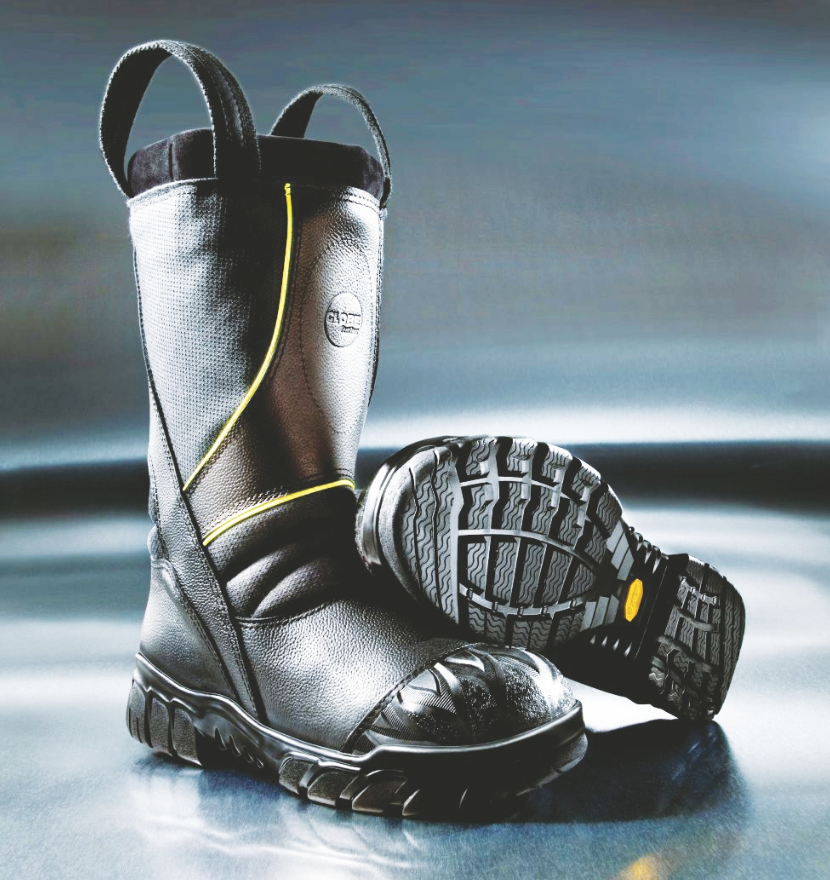We took a look at the MSA G1 with iTIC (Integrated Thermal Imaging Camera) at the MSA booth during FDIC 2017. Sean Meigs from MSA gave us a quick overview of the features included with the G1 and the iTIC. If you haven't seen this iTIC I highly recommend getting a demo of the unit. I do not feel that this replaces a handheld imager but it is really nice to have integrated into your SCBA. It is very well designed and really does not create any more clutter on the SCBA. I really like the way the unit is powered from one central power source. You do not need to check and change batteries from multiple places. If you want more information about the iTIC or the G1 you can visit their website at http://msafire.com/breathe/
Gore Particulate Hood Quick Look
During FDIC 2017 we had the opportunity to take a quick look at the new Gore Particulate Hood. This is a particulate blocking hood built by W.L. Gore and Majestic Fire Apparel. Many of you have heard of each of these companies so it is no surprise to see Gore provide the particulate blocking layer to Majestic Fire Apparel to manufacture and distribute the hood. Gore has been a very well known barrier development company and Majestic Fire Apparel has been a leading manufacturer of fire service hoods for many years. In the video below Holly Blake gives us a brief overview of the new hood and how it performs.
Elkhart Brass XD Nozzles
At FDIC 2017 we met with Chris Martin from Elkhart Brass to take a look at the new XD nozzles. Elkhart has really done a good job on these nozzles listening to the feedback of firefighters and using suggestions in the design. This series from Elkhart is titled XD for a reason, it stands for extreme duty. Once you take a look at them you will realize they truly are built for work. Everything on this nozzle was considered and not just what you see in plain view. The waterway inside is also refined offering a full round ball for a smooth internal barrel. Take a look at the video below to get a nice overview of the new Elkhart XD nozzles.
Tru ID Hose with Dennis Legear
If you haven't heard of Dennis Legear or about his research from hydrants to nozzles you have to read up and watch this video. Dennis has provided the fire service with some great ideas and research and his latest project has come to fruition. Tru ID hose was a major effort by many to produce a spec of fire hose built with purpose and built to solve several critical issues. In the video below Dennis explains some of the reasoning and details behind the design and why this is important to every firefighter that rides the nozzle. If you would like to read more about his work visit his website at: www.hydrant2nozzle.com
HALO Hood by Majestic Fire Apparel | Box Alarm Training
The HALO Hood is a new firefighting hood designed by Majestic Fire Apparel. The HALO Hood stemmed from recent research on the prevalence of cancer among firefighters. Typical hoods offer limited protection from particle infiltration which results in particles making their way through your hood and onto your skin where absorption can take place. The HALO Hood has a built in particle barrier in key places throughout the hood. The hood features panels of protection placed in key areas in order to create a balance of comfort and protection. This hood offers significant levels of thermal protection, higher than most hoods on the market. You can view the detailed TPP ratings from the Majestic Fire Apparel website. Check out our video below to see the review. You can also visit www.majhoods.com for more information.
HALO Hood Review Video
https://www.youtube.com/watch?v=qct2N9VPlsg
Iron Fox Axe - Product Review
Check out our latest product review of the Iron Fox Axe. This axe has caught the attention of many especially with it's "battle axe" look. Once you look past the aggressive aesthetics you will find several nice features. If you would like more info about the Iron Fox Axe take a look at their website: IronFoxAxes.com https://www.youtube.com/watch?v=GnEQo3xelAw&feature=youtu.be
The FF Wedge™
Many firefighters have asked us about the FF Wedge™ and where to find them. We have put together a short video below and have also provided Dale Pekel's in depth video of the wedges. If you are looking for them you can find them in our website store just Click Here. Check them out below: https://www.youtube.com/watch?v=-CU2GNrFf-k
https://www.youtube.com/watch?v=6h5f24dbq9g
Black Smoke Shields - Product Review
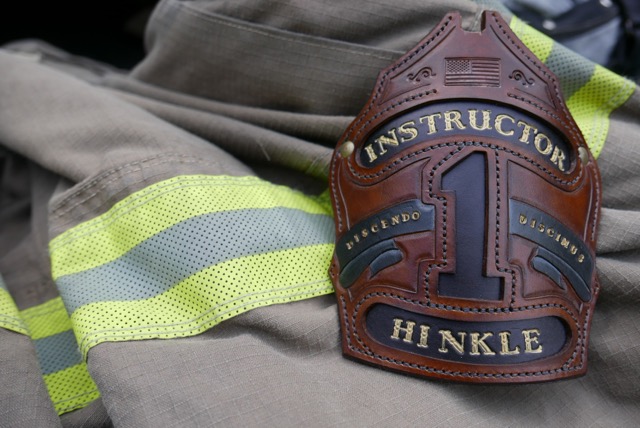 I just recently received my new helmet shield from Black Smoke Shields. I was very pleased with the results! These shields are hand made in Georgia and you can tell they take pride in their product. In the past I have purchased custom shields and it seems like you always have to wait an eternity to find a good one. Right now Black Smoke Shields is around a 6-8 week turn around on orders. That is really quick for a custom shield. Check out our product review video below:
I just recently received my new helmet shield from Black Smoke Shields. I was very pleased with the results! These shields are hand made in Georgia and you can tell they take pride in their product. In the past I have purchased custom shields and it seems like you always have to wait an eternity to find a good one. Right now Black Smoke Shields is around a 6-8 week turn around on orders. That is really quick for a custom shield. Check out our product review video below:
https://www.youtube.com/watch?v=ehE1lcXitf0
For more information you can visit their website and Facebook Page:
MSA G1 Review
We recently had the opportunity to get a look at the new MSA G1 SCBA. This unit just went into production and we have put together a review for you to get a look at it for yourself. Below the video we share some of the details about the new NFPA 1981 and 1982 standards and also some more information about the SCBA. https://www.youtube.com/watch?v=OKbL57ReqSI
The new G1 is a complete overhaul of the past SCBA systems you have seen from MSA. We have broken each of these features down below:
 The Face Piece
The Face Piece
The new G1 face piece is completely different from past models. The new face piece is very light, coming in at just under 1.5 pounds. You will also notice the new G1 mask has all electrical systems removed. This is accomplished by allowing the regulator to handle the communications, HUD, and air. Now that these systems are relocated you have a very streamlined and low profile mask which is very comfortable.
The Regulator
The regulator is a fundamental component of this entire system because not only does it supply your air but also pipes the lighting through your face piece for the HUD and includes two microphones to amplify your voice through the voice amplifier.
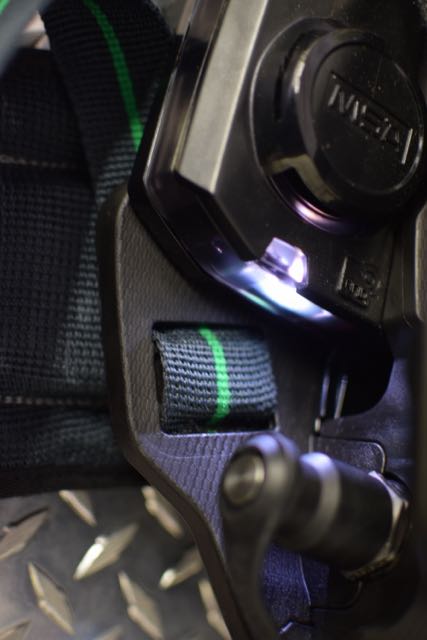 The Harness
The Harness
The new harness features a new quick release system for both the cylinder mount and the coupling itself. You will find this system to be very fast. The most notable comfort feature of the G1 is the new adjustable and swiveling lumbar pad. The lumber pad is adjustable to your height and also swivels as you move. The shoulder straps also have a few changes to help the straps stay in place as you move. The straps snap together at the frame and then each strap has a friction material positioned on you shoulders to help keep the straps from shifting. You will also notice status LED lights all over the SCBA. These lights give you a visual indication of the users air level. When the SCBA low air alarm activates you will also see the RIC connection will illuminate for other firefighters to make that connection.
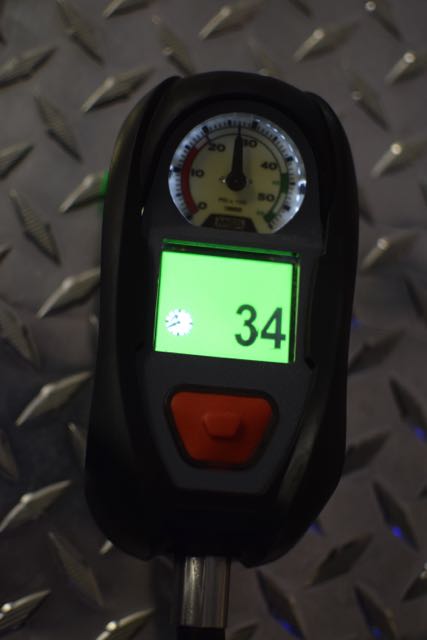 The PASS Device
The PASS Device
The G1 pass device features an analog air pressure gauge and also a digital display. The display is customizable and can show your air pressure or time remaining using an algorithm to calculate the time you have available based on your air consumption. The SCBA is also bluetooth compatible and will include RFID as an upgrade. You will also hear the new NFPA 1982 common PASS sound which all SCBAs will have for the 2013 edition of NFPA 1982.
 Communicaitons
Communicaitons
The new communications system has been well though out. They have moved your voice amplifier speaker off of your mask and onto your harness. This helps tremendously by removing unwanted weight off the mask and allowing the mask to be more streamlined with less to snag on. The regulator uses two microphones to amplify your voice through the speaker. You will find this system to be very clear and loud.
Summary
Overall this SCBA is very different from past models. My first impression was that the SCBA was a little heavy but after analyzing the systems you see where the weight has been shifted as an advantage. The G1 harness weighs 15.5 pounds with the battery, 25.5 pounds with a 30 minute 4,500 psi cylinder and the mask weighs just under 1.5 pounds. So, when you lift the harness for the first time it feels a little have until you actually strap it on and wear it. The reason it feels like this is because the weight you are used to carrying on your mask shoulder strap (for a PASS, HUD and Voice Amplifier) have all been moved to the harness. You also get a little added weight for the comfort feature of the new adjustable lumbar pad. This SCBA wears nicely and feels very balanced and the features give you a lot of advantages on the fire ground.
BOTTOM LINE: If you get a chance to see this pack do not just look at it and the features. Strap it on and wear it. You need to feel the pack to really understand it's design.
New High-Rise Pack Innovation - QuickLay Fire Attack
https://www.youtube.com/watch?v=km9ETzhw7i0 QuickLay Fire Attack has introduced their brand new Attack Pack and Lay Pack for the American Fire Service. I had an awesome opportunity to meet and talk with Sebastian Jacobs, the Managing Director of QLFA, about his innovative high-rise pack system. Sebastian is from Australia and developed this high-rise pack after seeing the "Cleveland Load" hose lays that gained popularity in the United States. He designed a pack to not only carry the hose but to become part of a hose management system to increase efficiency on the fireground. The premise of the design is to establish two packs to deliver 200' of 1.75" hose in a variety of situations.
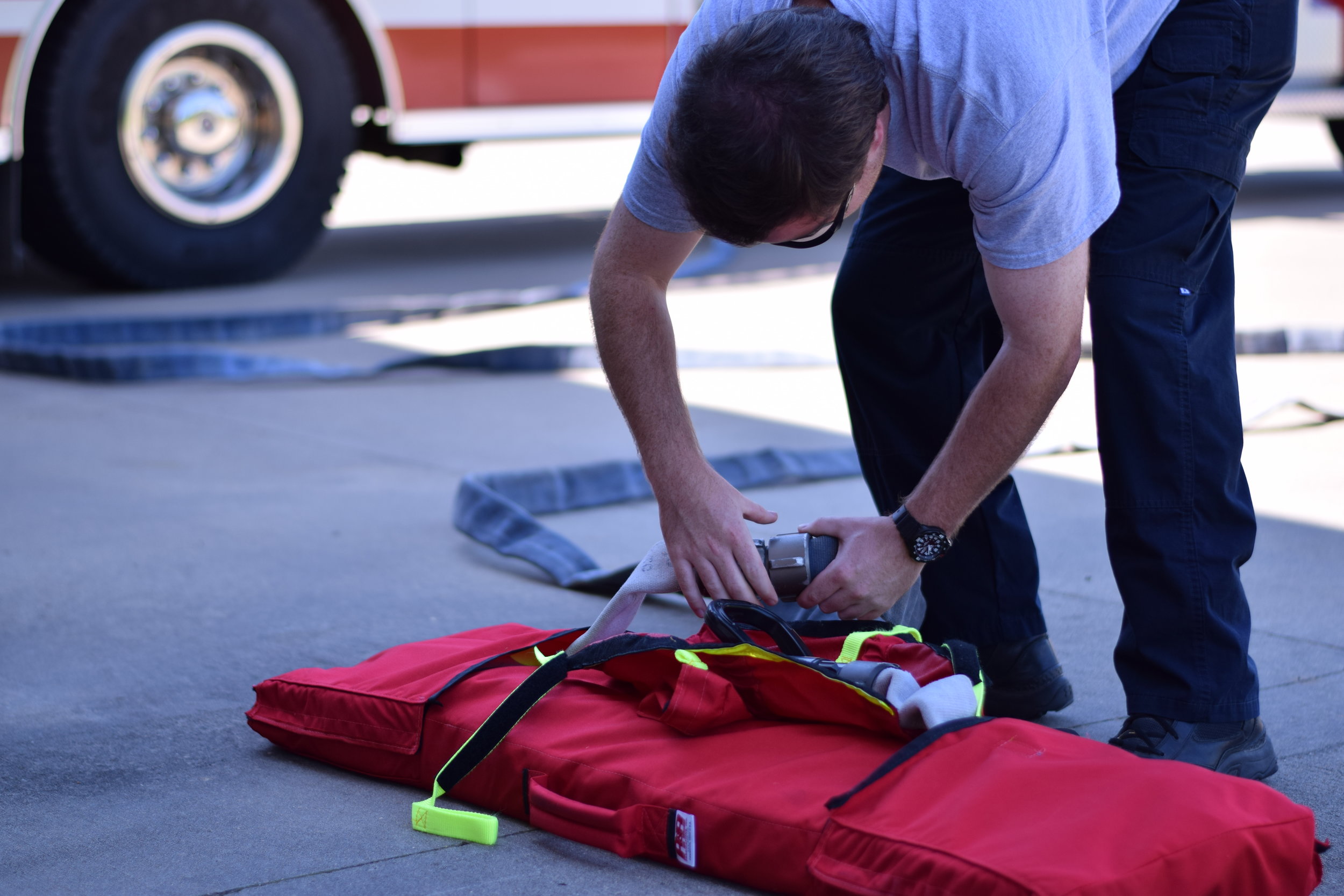 The Attack Pack is designed to carry 100' of 1.75" hose in a Cleveland Load so that you can deliver a manageable attack hose closest to your entry point. This pack can also be used for a wide variety of hose stretches we very commonly use such as the extended attack, wye'd lines, courtyard stretch, skid load, etc. The Attack Pack has no buckles or zippers and has a very streamlined designed to make carrying and advancing the hose much more efficient. With no buckles you can easily deploy the pack by pulling the "deployment strap" or with sufficient pressure the pack will self deploy when the hose line is charged.
The Attack Pack is designed to carry 100' of 1.75" hose in a Cleveland Load so that you can deliver a manageable attack hose closest to your entry point. This pack can also be used for a wide variety of hose stretches we very commonly use such as the extended attack, wye'd lines, courtyard stretch, skid load, etc. The Attack Pack has no buckles or zippers and has a very streamlined designed to make carrying and advancing the hose much more efficient. With no buckles you can easily deploy the pack by pulling the "deployment strap" or with sufficient pressure the pack will self deploy when the hose line is charged.
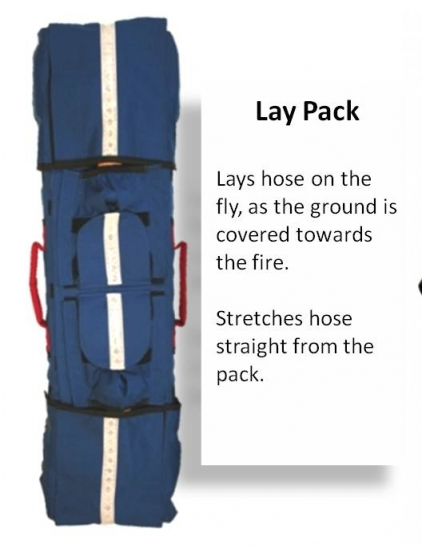
When the Attack Pack is used in situations like high-rise fires or standpipe operations you can use the Lay Pack to bring a water supply to the Attack Pack. The Lay Pack will also carry 100' of 1.75" hose but is loaded with an Accordion Load. This allows the Lay Pack to make the standpipe connection and then the hose will flake out of the pack while it is carried toward the Attack Pack.
For more information on QuickLay Fire Attack you can visit their website at www.quicklayfireattack.com.
Firefighter Bailout! Are You Ready?
As firefighters, we often feel invincible and believe that we will always be able to perform whatever duty we are called to perform without negative consequences. At the same time, we are continually reminded every couple of days that we are not invincible with the announcement of another line of duty death. Take a look at the video. Would you be able to escape if ladders had not been in place? How about on an upper floor out of reach of a portable or aerial ladder?
Many people discount the need to be ready to bale because a lack of hi-rise buildings in their district. According to NFPA & OSHA statistics, 90% of all falls from a distance of over 10' are fatal when free falling a distance of 10' or greater. If you operate in a two story or taller building, it would be smart to be prepared.
Although every major turnout manufacturer that I know of is offering a firefighter bailout kit or escape harness, many fire departments are not purchasing them due to the added cost and trying to operate on already thin budgets. As firefighters, this leaves us on our own to do what is necessary to be prepared in terms of training and equipment should we have to make an emergency escape. What follows is a ridiculously easy and relatively inexpensive option to be prepared.
Many turnout manufacturers are now offering turnouts with nylon belts and plastic quick connect buckles instead of suspenders. These pants already have loops, Velcro tabs, or both to keep the belt attached to the pants. If you are currently wearing this style pant, remove that belt. All it is good for is holding your pants up. Replace it with whatever truck style belt you already have or can afford.
These are the same pants, but the supplied belt is removed and replaced with a “Gut Belt” that I had hanging in my locker. In addition to holding my pants up, this belt:
- Is manufactured to NFPA 1983 requirements for ladder/escape belts.
- Rated at 8000 lbs.
- Can increase visibility if equipped with reflective and/or fluorescent trim.
- Has hardware that exceeds NFPA load specifications.
- Has multiple points of attachment.
- Can be utilized with existing factory loops and tabs.
- In conjunction with other equipment for personal escape and firefighter rescue, would be far more effective than a nylon belt and plastic buckle. Also useful with, ladder work, carrying other tools or accessories, tags lines, etc.
 What if you’re using turnout pants equipped with suspender tabs and no loops or tabs to hold a belt? No problem with these inexpensive velcro loops that hang on your suspender tabs. These are not holding any weight. They just provide a means to keep an escape/ladder style belt on your pants so it can easily be utilized. These are manufactured by Extreme Rescue. I picked them up at FDIC. You can visit their website at xtremerescue.com.
What if you’re using turnout pants equipped with suspender tabs and no loops or tabs to hold a belt? No problem with these inexpensive velcro loops that hang on your suspender tabs. These are not holding any weight. They just provide a means to keep an escape/ladder style belt on your pants so it can easily be utilized. These are manufactured by Extreme Rescue. I picked them up at FDIC. You can visit their website at xtremerescue.com.
For me, this is a good option to provide a balance between purchasing and dealing with the bind of a complete escape or rappelling type system with leg loops and being completely unprepared.
Lastly, keep in mind this is part of a system. A belt alone will not do you any good without at least a carabiner, a section of rope (how much is up to you), and practice, practice, practice.
If you have ideas, questions, concerns, or comments; please post them below or on our Facebook page.
*I am not associated with, nor profit from anything affiliated with Xtreme Rescue.











